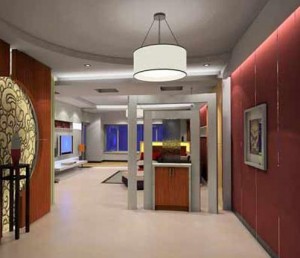Currents higher than the normal working current will speed up the light attenuating process, dramatically reducing the working life of white LED Lights. There are several other facts can prove that fluorescent powder’s degeneration is the main factor fir the short life of white LED lamps: 1. Normally, we will find that after aging tests, most white-ray LEDs send out a kind of blue-white rays instead of white rays, indicating the degeneration of fluorescent powder; 2. Some people tested the performance of blue-ray LED chips and found that although the capability of the entire LED lamp has dropped more than 30%, the degeneration of LED chips is only a few percent. This shows that most degeneration is from fluorescent powder. 3. Same chips, high power package has a much longer life than low power package. (will be discussed more in details in next section)
Overall, under the influence of temperatures, the degeneration of fluorescent powder is inevitable. The higher the temperature, the fast the degeneration.
The degeneration of blue-ray LEDs:
Among LED chips, blue-ray LEDs have the shortest working life. The average life of low power plug-in blue-ray LEDs under normal working current (20mA) is around 7000-10000 hours. Low power plug-in red-ray LEDs working under 50mA current, they will suffer no light attenuation even after 8000 hours. Besides, the average life of yellow-ray LEDs and green-rays LED Street Light are longer than 10000 hours. Thus this congenital defect of blue-ray LED chips is another main factor for the short lives of white LED lamps. The internal materials of LED chips cannot be changed, but scientists still can apply themselves on finding better materials for external parts of LED chips.
Materials made up LED bases have bad thermal conductivities:
Usually, low power plug-in LEDs will be fixed on based made up by iron. From the view of heat radiation, iron has a very low thermal conductivity. Meanwhile, cross areas of supporters are usually small, which cannot radiate heat in time. Materials and constructions of LED bases will cause the weak heat radiation behavior of low power plug-in LED lamps. Copper has much better heat radiating capability than iron. In consideration of its high price, LED manufacturers have to reduce the cost at the cost of performances and lives of their products.

